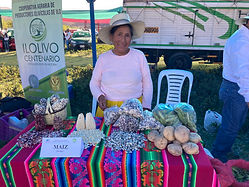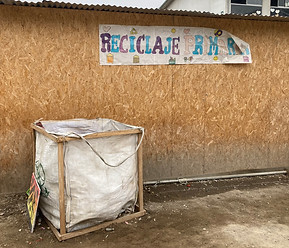SUSTAIN. ABILITY.

Exploring Education for Sustainability in Peru
Intention is such a powerful tool.
Before leaving for an International Field Experience, Fulbright asks that participants each create a driving question to guide their travel and learning.
For this reason, our capstone projects are more than a travelogue or deck of photos. I've enjoyed this opportunity to reflect on what I've learned.
My Driving Question:
Q:
Which Education for Sustainability practices
are formally or informally incorporated
into Peruvian education and culture?
A Few Notes

For this exploration, I've chosen to use the Cloud Institute for Sustainability Education Enduring Understandings because they represent the life long beliefs and sustainable mindsets we seek to foster in ourselves and our students.
I was in Peru for 17 days. A cohort of 18 met in Lima to build cultural and historical understanding, learn about the education system, and recieve a security briefing from the American Embassy.
After 5 days, I flew with
@JenMaryMcKenzie to the Moquegua
Region in southernmost Peru.
We landed in Tacna, only 40 km from
the Chilean border. We spent a week
guided by our host teacher,
Dennys Barrios, a 2016 Champion
Teacher of Peru and fellow
Fulbrighter.
Our home school,
welcomed us with open arms.
Everyone should travel with a teacher librarian. Jen taught me
how to sticth movies together and reintroduced me to journaling. #TeamMoquegua





Instead of offering a chronological travel blog, I record my experiences as they relate to the Education for Sustainability (EfS) Enduring Understandings. These are also my reflections on what I saw and experienced. Efs focuses on fostering and modeling behaviors and mindsets that lead to sustainable life. Below, I address those I was able to connect with and find evidence of during my limited but wonderful time in the country. Many fit more than one Enduring Understanding, but I've done my best to categorize them.
Please remember that I approach my reflections and analysis as a teacher and guest of Peru.
-
I'm a native English speaker and have little or no experience with the 84 languages spoken in Peru.
-
My ability to ask questions and make observations were facilitated by our host teacher, Google Translate and my very limited Spanish.
-
Educators and students in Moquegua were very candid but true understanding of a school, a region, and its culture cannot be gained in such a short visit.
As such, please be assured that I do not consider myself an expert. My intention is to share connections I made in my brief and meaningful time in the greater Lima area and the Moquegua region.
A HEALTHY AND SUSTAINABLE FUTURE IS POSSIBLE
We can learn how to live well within the means of nature. This viewpoint inspires and motivates people to act.


Agriculture=process of farming
Agrarian=culture/lifestyle of farming.
It matters that that Peru protects and honors its agrarian roots and values.

The Moquegua Region is ecologically diverse because it extends from more than 350 mountains (east) to the ocean (west). Although it only gets 7.8" of rainfall a year, the Osmore River begins in snow covered mountain peaks and flows to the Pacific. In between is a fertile area where generations of farmers have built stepped terraces and used irrigation for agriculture.
As a result, the region is famous for its diversity including avocados, mangos, olives, and the grapes used to
vint Pisco.




The Minister of Agrarian Development of Peru is planning a dam which will include grassland management and improvement and retain water longer in the mid-region before it flows to the ocean. It will provide better emergency and disaster management as well.
This model was displayed at an annual celebration of farmers and was intended to help Moqueguans understand the proposed plan.
It will be important to track the progress of this project, as water from mountain run off becomes more scarce. As snow caps decline due to global warming, the dryest parts of Peru, including Lima and Moquegua, are being impacted. An attempt to capture fresh water before it reaches the ocean may be a game changer.
In order to thrive, Peru will have to balance economic expansion and environmental concerns. It's reasonable to wonder how successful this will be, given the instability at the highest government levels.

































